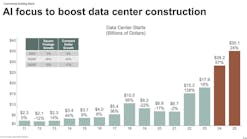As someone married to an elementary school teacher, the last thing I want to do in early August is write about the upcoming school year. Indeed, in June, I saw this posted on Twitter:
How teachers view summer:
LAST DAY OF SCHOOL: “Hooray! I am out of here!”
NEXT DAY: “No! Summer’s almost over!”
My wife was in total agreement. Of course, no one wants their vacation to be over, but I also know that one of the things she is least excited about returning to is her workplace’s spotty HVAC system. Of course, with public school budgets as tight as they are today, our local school district is just one of many thousands across the U.S. trying to make do with less.
Fortunately, our industry is helping. As you will read in this issue, innovative engineering and product development is allowing many schools to find both improved HVACR performance and energy savings even as they grow and modernize their capacity. Case studies from South Dakota State University and Western Maryland’s Frostburg State University illustrate how advanced technologies and the broader use of plastics in new chillers and cooling towers are helping to reduce environmental impact even while boosting efficiency and durability.
Just back from Russia, Dr. Ishai Oliker, PE, also shares with us his extensive experience with district heating systems and offers a deep dive into his work at Jamestown Community College in Western New York State. There, he discusses how the growing campus has managed to heat 27% more square footage without adding any new boilers. “Old district steam systems can be successfully replaced with modern hot water systems, yielding substantial economic benefits,” he writes.
Indeed, the combination of technology and necessity are yielding many benefits, it seems, ones that HPAC will explore more in our INNOVATION ISSUE this October. Getting back to this issue, however, it is also worth noting the important engineering work being done at another school, Ecole Polytechnique Fédérale de Lausanne (EPFL) in Switzerland. As our own Larry Clark observes, with newfound admiration, the vast and prolific research institute is churning out useful studies at a surprising rate. The latest involves the potential use of artificial intelligence to help design next-generation heat pump compressors.
Young minds, taught and mentored to help our industry to grow and to serve. I was struck by that last word—serve—when I came across ASHRAE’s Mission Statement the other day:
To serve humanity by advancing the arts and sciences of heating, ventilation, air conditioning, refrigeration and their allied fields.
After decades of corporate downsizing, reorganizations, and abandoned quality movements, many of us can be forgiven if we cynically look past lofty mission/vision statements Iike that. But many Millennials and Generation Z members, like the young women at the first Women in the Mechanical Industry (WiMI) convention, still believe that they can and will make a difference.
And when I look at all the ingenious work being done in so many corners of our industry, I’ll be damned if I don’t find myself agreeing with them!










